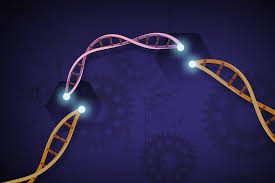Setting Aside Social Concerns and Public Participation, Scientific Committee Maps a Pathway to Heritable Human Genome Editing

A report released today by the U.S. National Academies of Sciences and Medicine and the U.K. Royal Society lays out a road map to clinical uses of heritable genome editing – that is, altering the genes and traits of future children and generations. The commission was mandated to focus on technical safety in developing this “translational pathway [to] clinical uses” of what is sometimes called “CRISPR-baby technology.” But its statement of task includes the stipulation “should society conclude that heritable human genome editing applications are acceptable.”
“The commission’s mandate was flawed from the start,” said Marcy Darnovsky, PhD, Executive Director of the Center for Genetics and Society (CGS). “The idea that now is the time to set aside the deeply controversial question of whether heritable genome editing should be done at all in order to iron out the nitty-gritty details of how it might someday move ahead is completely backwards.
“The commission claims to agree that public participation in this high-stakes decision is essential,” Darnovsky continued. “Why then do its members take it on themselves to make the choice that matters most by setting out a list of acceptable uses and the steps to getting there? Why build a complicated and costly pathway to CRISPR-baby technology unless you know that’s where you want to go?”
The report, Heritable Human Genome Editing, gives a useful account of the significant scientific and technical challenges that editing the genes of embryos would entail. Though it frequently refers to the ethical and societal challenges involved, it does not address these in any detail. It includes an entire chapter on governance and policy issues, but downplays the widespread prohibitions on heritable genome editing in place around the world, including the Oviedo Convention – a binding international treaty signed by 29 European nations. In fact, a recent policy survey identified more than 70 countries that prohibit heritable genome editing.
“It isn’t really possible to set aside social concerns and values in the way this report tries to do,” said Katie Hasson, PhD, CGS Program Director for Genetic Justice. “They resurface repeatedly, only to be outsourced – like when the report says that public discussion must take place, but that someone else will have to be responsible for it.”
Hasson added, “The report makes a subtle but important shift in focus, from what 'society' might conclude is acceptable to what a given country decides. This move effectively rejects the vital concept of global governance. Without international agreements, the reproductive tourism we already see will surely develop to include cross-border genome editing, with potentially disastrous results.”
Heritable genome editing is deeply controversial among the public; advocates for disability, reproductive, and racial justice; scientists and biotechnology industry figures; and others.
Darnovsky notes, “If heritable human genome editing is approved even for the limited uses that the report lays out, it’s unlikely that any boundaries would hold. Especially where fertility services are offered on a for-profit basis, heritable genome editing would likely escape from scientific recommendations or regulatory limits. We could see gene-editing for embryos marketed as an enhancement technique, and from there the emergence of a market-based eugenics that would exacerbate already existing discrimination, inequality, and conflict.”



